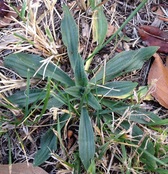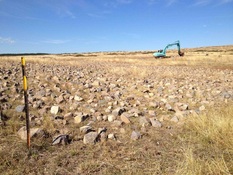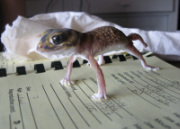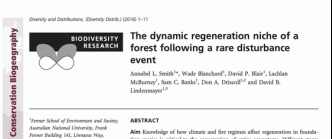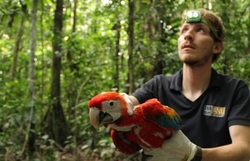
Our new paper provides data about natural gene flow that will serve as a baseline for monitoring and preserving connectivity across the Amazon.
Olah G, Smith AL, Asner GP, Brightsmith DJ, Heinsohn RG, Peakall R (2016). Exploring dispersal barriers using landscape genetic resistance modelling in scarlet macaws of the Peruvian Amazon. Landscape Ecology DOI: 10.1007/s10980-016-0457-8. Read online.
Check out the 3-minute video documentary about this work:
